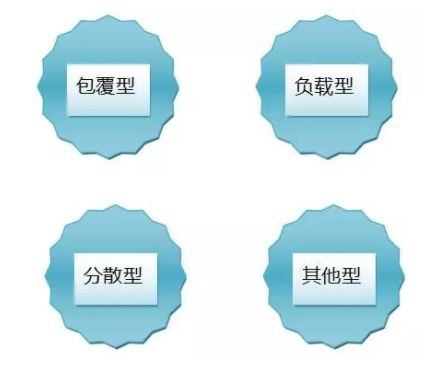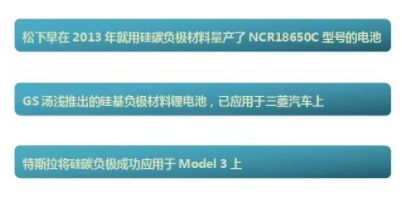The problems of silicon anode materials include low cycle life, large volume changes, and continuous production of SEI films. Silicon carbon anode materials can effectively improve these problems. Therefore, silicon carbon anode materials are undoubtedly the development focus of anode materials in the future.
Lithium-ion batteries have been widely used in portable consumer electronics, power tools, medical electronics and other fields due to their excellent performance. At the same time, it also shows good application prospects in the fields of pure electric vehicles, hybrid electric vehicles and energy storage.
The current commercial lithium-ion batteries mainly use graphite as the negative electrode material. However, in recent years, the demand for battery energy density in various fields has increased rapidly, and there is an urgent need to develop higher energy density lithium-ion batteries. Therefore, the development of higher energy density anode materials is imminent.
â–Why use silicon carbon as anode material?
Properties of carbon and silicon materials

From the above table, it can be seen that the mass specific capacity of silicon materials can reach up to 4200mAh/g, which is much larger than the 372mAh/g of carbon materials. It is currently the material with the highest theoretical specific capacity known to be used as anode materials. In addition, silicon materials are environmentally friendly, rich in reserves and low cost. However, the problems of silicon anode materials include low cycle life, large volume changes, and continuous production of SEI films. Silicon carbon anode materials can effectively improve these problems. Therefore, silicon carbon anode materials are undoubtedly the development focus of anode materials in the future.
â–How is the silicon carbon material compounded?
Silicon carbon anode materials are mainly divided into:

1. Coated silicon carbon anode
Coated silicon-carbon anode materials are often carbon-coated silicon materials with different nanostructures. This type of material uses silicon as the main body to provide reversible capacity, and the carbon layer is mainly used as a buffer layer to reduce the volume effect and enhance conductivity. The carbon coating is usually amorphous carbon.
2. Loaded silicon carbon anode
Supported negative electrode materials are usually carried or embedded on the surface or inside of carbon materials with different structures (such as carbon fibers, carbon nanotubes, graphene, etc.), loaded or embedded with silicon films, silicon particles, etc. In such silicon-carbon composite materials, carbon materials often play a role. In view of the mechanical effect of the structural support, their good mechanical properties are conducive to the release of the volumetric stress of silicon during cycling, and the formed conductive network improves the overall electronic conductivity of the electrode.
3. Dispersed silicon carbon anode
Dispersed silicon-carbon anode material is a relatively broad composite material system, including the physical mixing of silicon and different materials, and also covers a highly uniformly dispersed composite system in which silicon-carbon elements form molecular contacts. Facts have proved that evenly dispersing the silicon material into the carbon buffer matrix can restrain the volume expansion of silicon to a certain extent.
â–What are the difficulties in the research of silicon carbon anode materials?
In order to solve the cycle life and safety problems caused by volume expansion, new problems concerning preparation and cost will arise.
In the process of charging and discharging, the volume of silicon will expand by 100%-300%. The continuous shrinkage and expansion will cause the powder of the silicon carbon anode material, which will seriously affect the battery life. The expansion of silicon will generate huge stress inside the battery. This stress will squeeze the pole pieces and cause the pole pieces to break; it will also reduce the internal porosity of the battery, promote the precipitation of metal lithium, and affect the safety of the battery.
The problem of volume expansion can be solved by controlling the content of silicon in carbon materials and reducing the volume of silicon to nanoscale; or changing the texture and shape of graphite to achieve the best match between carbon and silicon; or using other substances to coat silicon to promote Recovery after expansion; a series of methods such as more suitable electrode materials can also be used to reduce many problems caused by silicon expansion.
Practice has proved that in order to achieve ideal electrochemical performance, the particle size of the silicon particles in the composite material cannot exceed 200-300 nm. However, technical barriers to key indicators such as specific surface area, particle size distribution, impurities and surface passivation layer thickness are very high, and domestic manufacturers have not yet reached it, and the cost of outsourcing nano silicon powder is extremely high.
â–To what extent has the silicon carbon anode material been developed?
Some foreign companies have achieved mass production of silicon carbon anode materials.

Domestic companies have been relatively slow in the industrialization of silicon carbon anodes. Shanshan Co., Ltd., Jiangxi Zichen, and Shenzhen Beiterui have already deployed the production of silicon carbon anode materials. At present, they have launched several silicon carbon anode materials with certain production capacity, such as CATL, BYD, Guoxuan Hi-Tech, Lishen, BAK The industrial application of silicon carbon anodes by companies such as Star City Graphite, Wanxiang A123, and Weihong Power are also in progress.
At present, the total output of silicon-carbon anode materials is still less than 1% of lithium battery anode materials. However, with the expansion of major anode companies and the rise of new companies, it is expected that silicon-carbon materials will officially enter the market in large quantities by the end of 2018. Although there is no perfect solution to the problems of silicon particles intercalating lithium, continuous rupture and growth of SEI film, consumption of lithium source and electrolyte, etc., after years of efforts by major domestic and foreign enterprises and scientific research institutes, some nano-silicon-carbon anodes The material has been approved by the battery cell company.
Steel Cord For Conveyor Belts
Steel cord conveyor belts are highly wear-resistant and used principally for long-haul conveying, heavy loads and physically demanding applications. They are especially suitable for high-mass or high-volume flows and for abrasive materials.
Steel cord Conveyor Belt Construction
The steel cord belt provides superior impact resistance, with the number and size being selected to meet the desired operating tension and application needs. The insulation gum is specifically designed to encapsulate each steel cord filament to reduce internal friction while providing enhanced adhesion to the cover rubbers. Top and bottom covers provide maximum protection to the steel cord. The cover compounds are specifically designed to meet the demands of the application and are available in a wide variety of rubber types and gauges.
Steel Cord,Steel Cord Wire,Steel Wire Cord,Conveyor Belt Steel Cord
ROYAL RANGE INTERNATIONAL TRADING CO., LTD , https://www.royalrangelgs.com